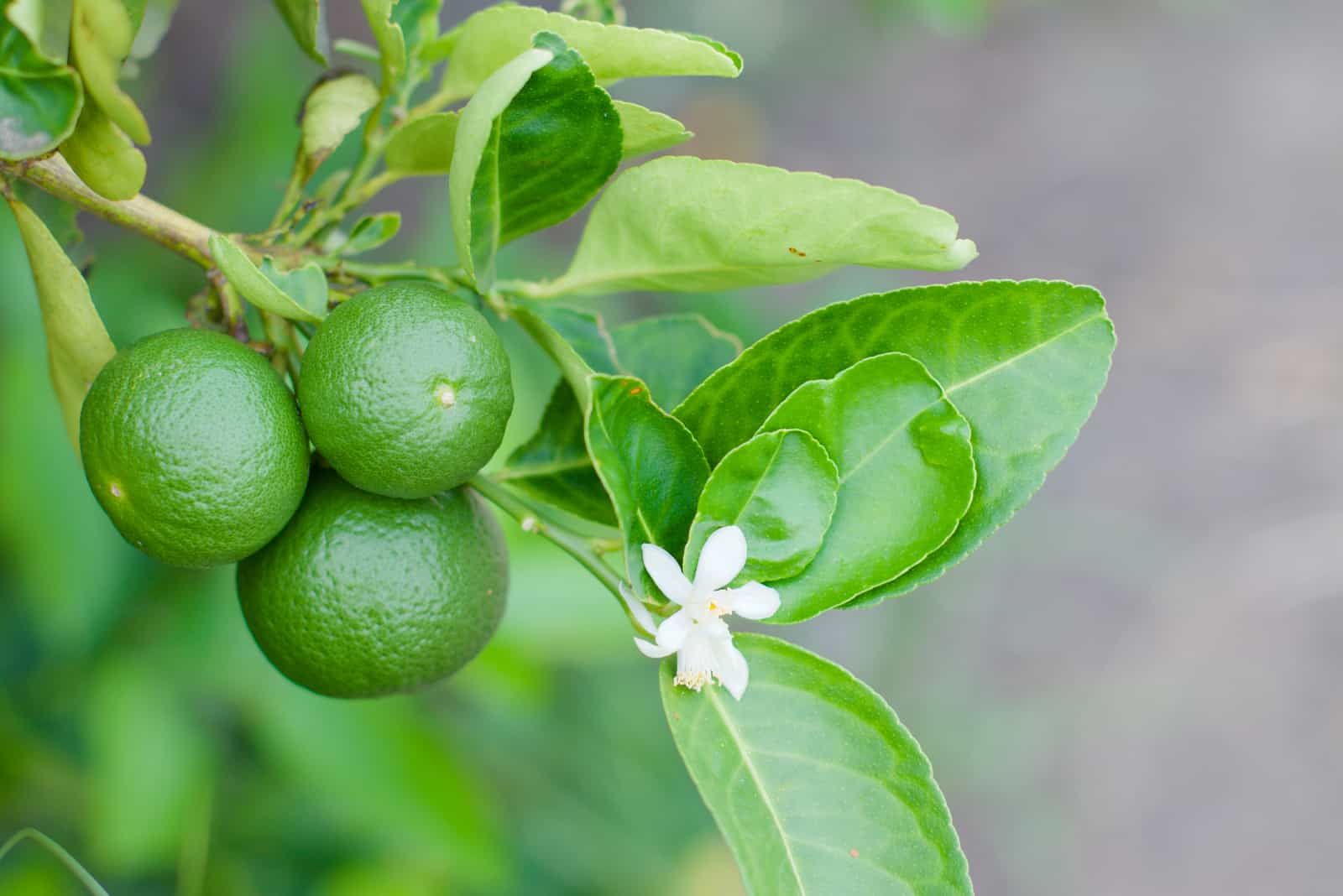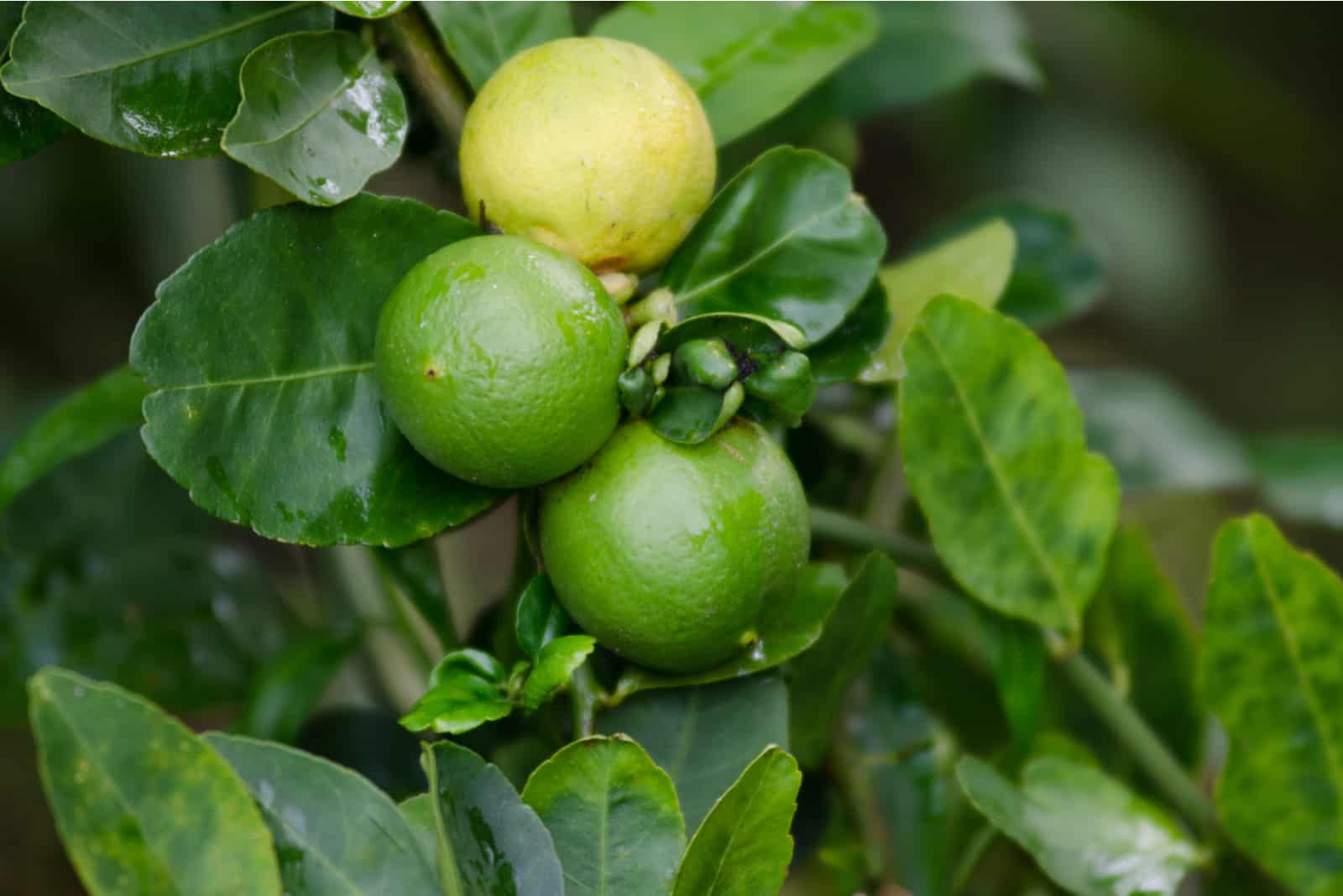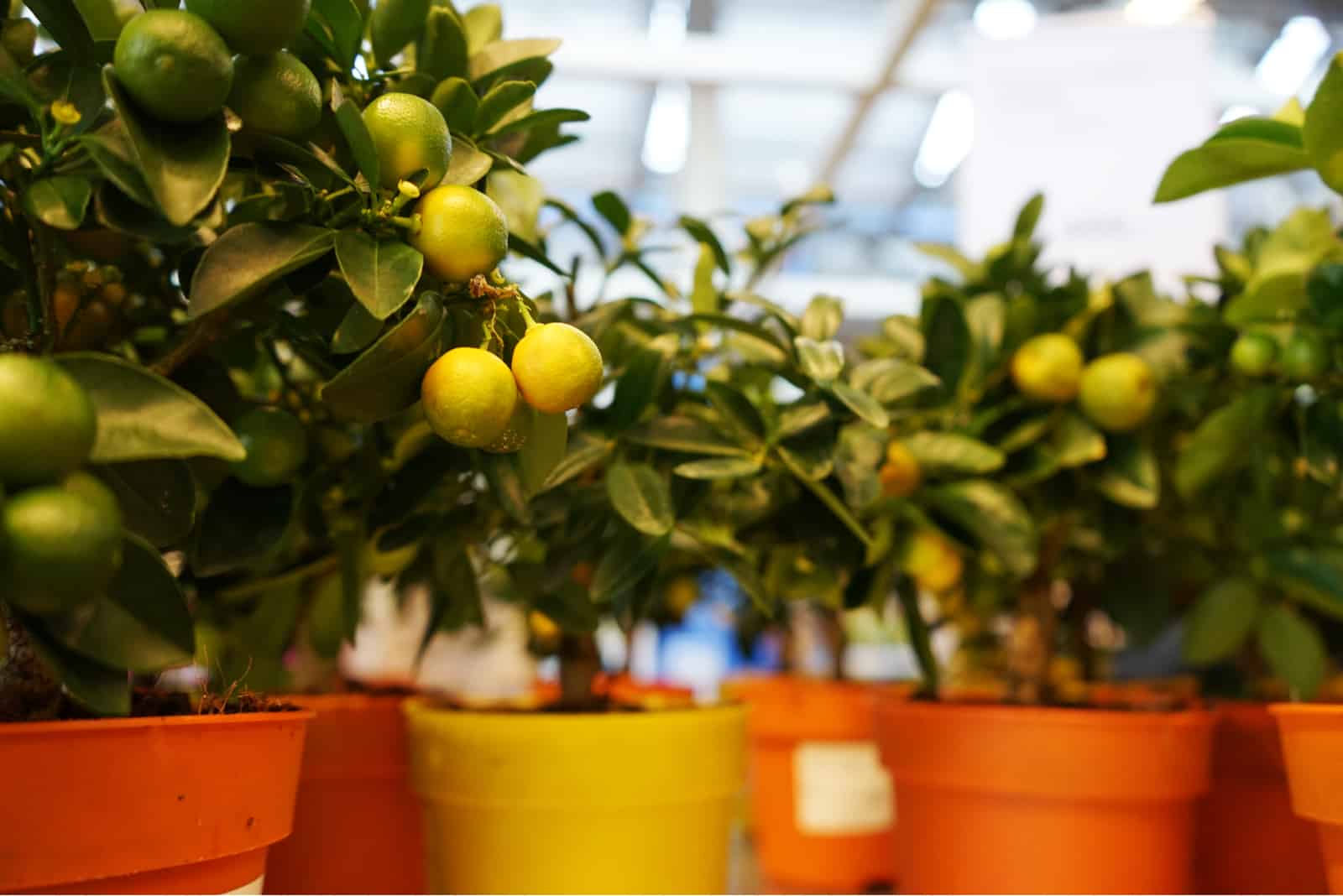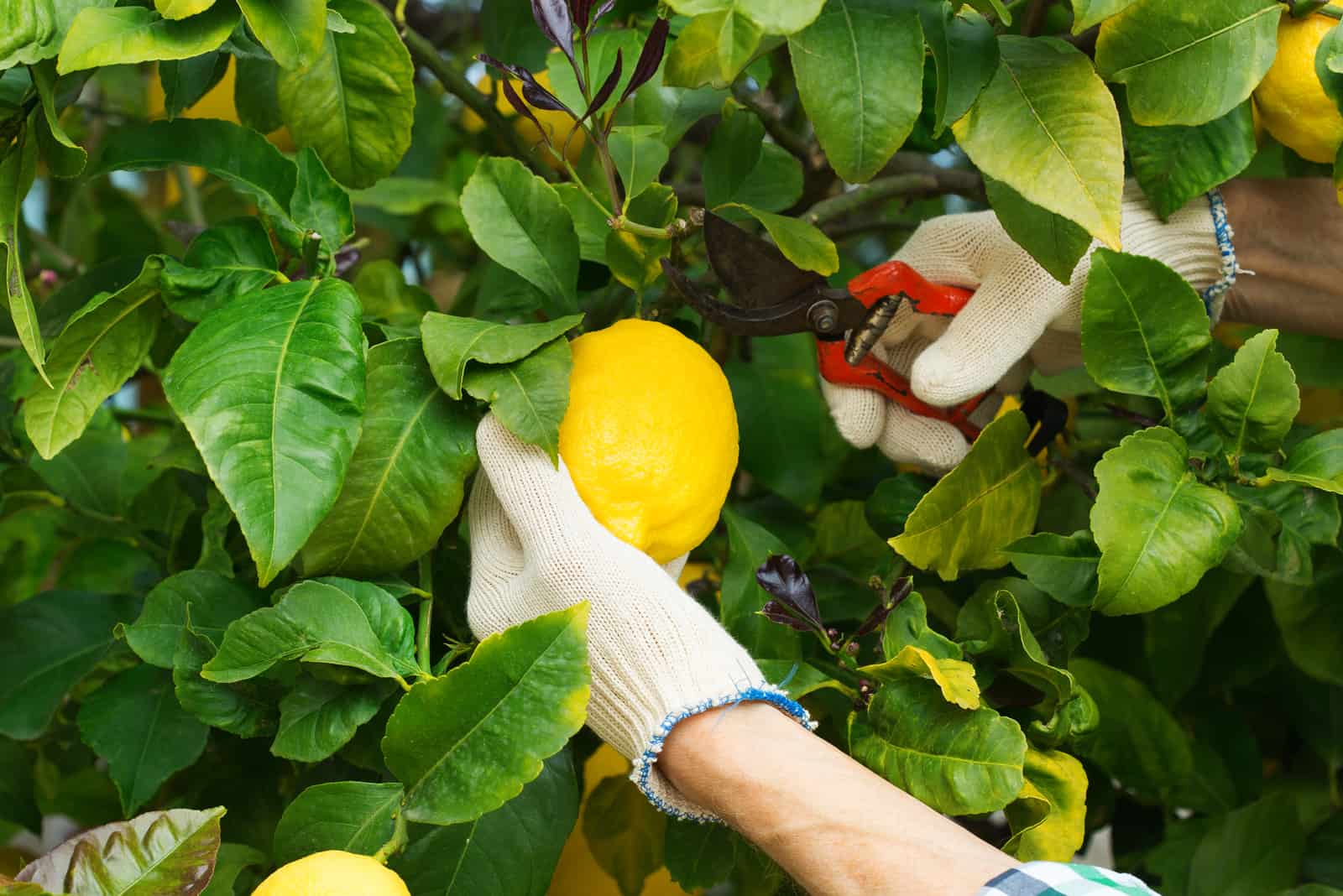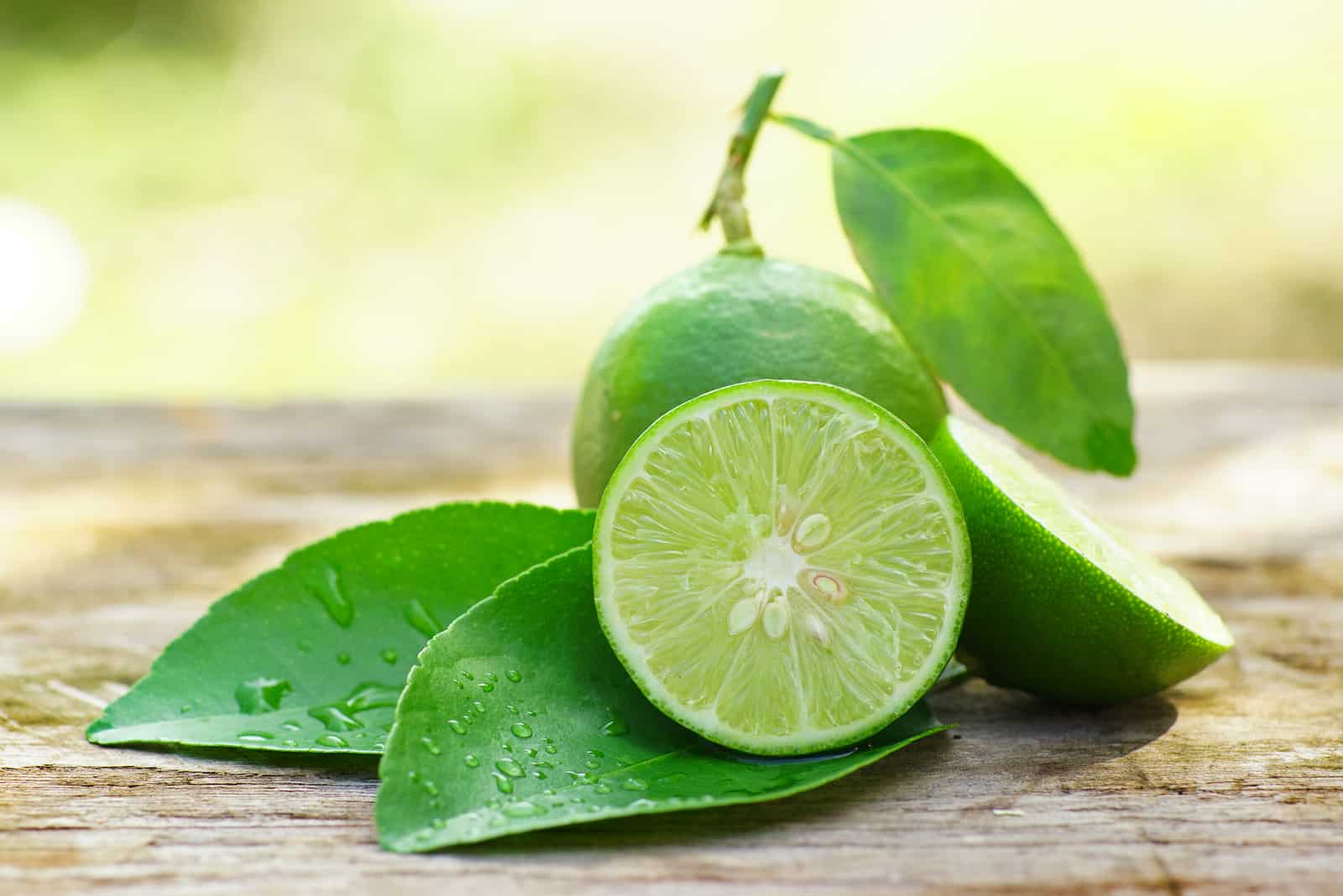Have you ever wondered why almost all lemons are harvested green and unripe? Well, it is because fully ripe lemons are too soft to travel, and they would probably end up rotting when being transported — and they have a long way to travel!
So, if you are growing lemon trees in your garden, you can harvest them once they turn yellow. However, what do you do when the majority of your lemons stay green and unripe, even though they are due to be harvested?
If you want to know what the reason is for green lemons not turning yellow, stay tuned and find out the answer!
Green Lemons Not Turning Yellow
There are a lot of factors that affect your plants’ growth, such as sunlight, soil type, watering and so on. We all want to grow those cute little yellow fruits in our own gardens and drink the fresh lemon juice, but taking care of them can be kinda tricky!
Here are 9 reasons why your lemons may stay green and unripe.
1. Not Enough Sunlight
Citrus trees require plenty of sunshine throughout the day, this applies to your lemon tree as well! All citrus fruits are green when unripe due to their chlorophyll, however, as they mature, the green pigment gets replaced with anthocyanin that reflects the yellow color of ripe lemons.
If you still have unripe lemons, even though the harvesting time has passed, the reason might be due to the lack of required sunlight. Do not plant the lemon trees too close to each other because they can block sunlight from one another.
2. Maturation Takes Time
We are used to planting seeds, taking care of our plant, and voila! You get fresh new fruits in just a few months. However, that is not the case with the lemon fruit.
If we take a look into the lemon tree life cycle, we will see that it takes almost 9 months for them to reach full maturity and ripeness! Consider them as your little, yellow babies as they grow and develop.
Many folks don’t know this, and they will often think that there is something wrong with their lemon fruit tree, but you just have to be patient!
3. Bad Air Circulation
Every tree needs air to breathe and grow, just like any other living creature! This might be an issue if you are planning on growing your lemon tree indoors because it is tricky to get the proper air circulationt that the tree needs, though some types like the meyer lemon tree can be grown indoors.
If you want to try your luck and grow indoor lemons, then put your plant in a well-ventilated room and provide enough artificial sunlight to encourage growth and development (you can also add prayers, they might help too!).
4. Inadequate Weather Conditions
Almost all types of lemons are sensitive to temperature fluctuations. Lemon trees thrive in temperatures that range from 77 to 88 degrees Fahrenheit, so anything below or above can impede their growth.
They can tolerate limited cool weather, though they would go dormant if the temperature drops to below 50 degrees Fahrenheit; however, a temperature below 28 degrees Fahrenheit for lemon trees is deadly — first the leaves would fall off, which would be followed by the overall destruction of the tree.
A temperature above 105 degrees Fahrenheit would be too hot for your tree, causing the fruits to drop off.
5. Not Enough Nutrients
Your plant loves eating all those nutrients that are provided in its soil. It needs them to develop those delicious, yellow lemons… but, a lack of nutrients might be the reason why there are green fruits all over your garden!
Well, the first thing you can do is to fertilize your lemons. But, what if you have already done that, and they are still green and unripe?
Then, the reason might be that you have planted the trees too close to each other, and now they are competing for nutrients because there are not enough for every lemon tree.
6. Unfitting Soil
Aside from nutrient-rich soil requirements, lemon trees also require a soil that is well-draining. The type of soil is not the most important thing which might affect the production of fruits and the fruit yellowing, however, the lemon tree needs proper drainage for growth and development.
If the lemon tree is not grown in well-draining soil, then the moisture can build up and lead to root rot. You should avoid heavy, clay and salty soils, as well as high chalice because it can impede the overall development of the tree.
7. Inadequate Watering
Your lemon tree is super sensitive to water stress, and can not tolerate drought at all! If you leave your tree without water for a certain amount of time, the green lemons won’t turn yellow, and the mature lemons w end up completely dry and juiceless — what’s the point in growing a lemon tree, if you don’t end up drinking the fresh lemon juice from your own garden?
Bear in mind that no matter if you are growing grapefruits or lemons, all citrus fruits plants need to be watered regularly. Their watering needs depend on the weather conditions, type of soil and size of the tree.
Watering issues are the main cause of curling lemon tree leaves.
Check out the care guide below to find out the watering requirements for your lemon tree!
8. Tree Might Be Too Young
I know that you are excited to grow lemons in your own garden (I was too), and you wait patiently for a year — nothing happens. Another year, also nothing. Trust me, I understand the disappointment that you are going through. I was pretty bummed out because my lemon tree didn’t start producing lemons even after a few years.
Every new season I tried to do something differently, but still nothing changed… that is until this year, I’ve seen the little lemons growing, and then my gardener friend told me that it is perfectly normal because the tree was too young to develop fruits.
Yep, that’s right — the tree’s age affects the production of the fruits. It could take about 4 to 5 years for your new lemon tree to start growing those yummy citrus fruits!
9. Pests & Diseases
Though it’s obvious, we must still mention that pests and diseases can prevent your lemon tree from producing lemons too. Your Lemons not turning yellow is just one of the consequences that can happen, though it seems like it is the most important one.
The most common citrus pests are aphids, citrus bud mites, and brown soft scales which are probably the worst one because they are practically undetectable!
A lemon grower’s worst nightmares are actually diseases, especially citrus canker. This disease is caused by the bacteria called Xanthomonas axonopodis, which affects leaves, fruits and the bark of the tree. It can easily spread by the wind or insects, thus infecting other trees.
Other diseases, like melanosa and root rot, solely damage the fruits, causing them to drop early or to rot. Root rot is caused by a fungus called Phytophthora genus, which lives in wet environments (another reason why we need well-draining soil), while melanosa is caused by the bacteria Diaporthe citri, which targets fruits produced on an old citrus tree.
More About Lemons
Lemons, also known as Citrus lemons, are citrus fruits derived from crossing male citrons and female oranges, with a bit of a sour taste.
Lemons are completely packed with all sorts of vitamins and minerals — for instance, 1 gram of lemon is equivalent to 30 mg (milligrams) of vitamin C! In addition to this, their peel is packed with calcium that can improve bone health, which is why it is often added to meals and desserts.
Health benefits are one of the many reasons why this fruit is so popular, asides from looking super cute and fun in your garden or home!
There are many types of lemons that can be grown but the Eureka lemon is the most common one as it can grow year-round, so here is some general information about it:
[table id=104 /]How To Take Care Of A Lemon Tree
1. Light Requirements
Many citrus varieties require direct sunlight for optimum growth and fruit production. Lemon trees require at least 8 hours of sunlight throughout the day to produce those juicy lemons packed with vitamin C!
I used to think that lemons absorb the color of sunlight which is why they are yellow, but that is not true — they are yellow due to the pigment called anthocyanin, the famous antioxidant that is super beneficial to our health.
2. Temperature Requirements
Mature lemon trees thrive best in tropical and subtropical climates, in temperatures that range from 77 to 88 degrees Fahrenheit. Temperatures that are too high can prevent photosynthesis, which causes the tree to go dormant and stop producing fruits.
Be aware of temperature fluctuations, especially when the plant is still developing because you might end up only with green lemons instead of a garden full of yellow lemons.
3. Fertilizer Requirements
Lemons are heavy feeders and they definitely require fertilizers during the growing season, especially for fruit production! They require nutrients such as manganese, zinc, nitrogen, copper, as well as boron.
I would recommend that you apply a Lemon fertilizer once every 3 months during the growing season, and liquid fertilizer once every other week. This will provide enough nutrients and you will be able to pick lemons from your own garden and make fresh lemonade!
4. Soil Requirements
Add “get a well-draining soil” to your Citrus limon requirement list, as this is necessary for lemon production. If you have inadequate soil, it might be the reason why all your lemons are green
When it comes to soil type, this tree is not too picky — you can provide them with either sandy soil or loam. The pH of a soil should be between 5.5 to 6.5, so you should test the soil before planting, to obtain the most optimum growth. Bear in mind that they prefer having moist soil as well.
5. Water Requirements
As we have previously mentioned, almost all citrus varieties are thirsty little plants that need constant and even watering. You should water the tree thoroughly at least once a week, and make sure that the soil is well-draining; if not, then the tree might get too much water, which can lead to root rot.
A deeply watered lemon tree can last for a week before you next water it, however, if you are growing an indoor plant, then you should water it as soon as the soil is completely dried out.
Bear in mind that the container needs to have drainage holes at the bottom to remove any excess water.
6. Pests & Diseases
Pests and diseases are usually dealt with using different pesticides and insecticides. For instance, the best thing to use for dealing with citrus canker disease is liquid fungicide that contains copper. It is good to apply it for prevention of the disease too.
If you notice that you might be dealing with a pest infestation, the best thing to do is to apply neem oil first and then choose an organic option. However, if this doesn’t solve your pest problems, then apply a specific pesticide or spray the plant with water combined with insecticidal soap.
7. Pruning
If you want to have healthy lemon trees that produce fruits abundantly, then pruning is one of the things you will have to master. The mature lemon trees grow sprouts that should be regularly pruned, as well as dead wood and any damaged branches. Young, growing lemon trees should also have their sprouts removed regularly, and any weak or broken limbs as well.
“Any growth that appears discolored, diseased or has been invaded by any pesky insects (such as scale or mealy bugs) should be removed immediately, as and when they appear throughout the year” is advice from the famous gardener, Joseph Marini.
Check out this video for more tips and tricks on how to grow plenty of lemons on one tree:
When To Pick Lemons
It can be quite tricky to determine the best time to harvest the lemons because we can not exactly say the exact time of year at which the lemons will ripen.
If you have taken good care of your lemon tree and now have lots of fruits produced, they might have different ripeness levels, which poses additional problems in determining their harvesting time. However, there are some tips and trick to help you distinguish ripe from unripe lemons:
1. Yellow lemons usually indicate ripeness — green lemons are usually the unripe ones that can still grow and develop.
2. We can take a look at the size of lemon fruits — if they have reached about 2 inches, then they are probably ready to be harvested.
3. If you harvested both yellow and green lemons, don’t worry! The green lemons can still grow and turn yellow, even once harvested. Leave them in a sunny location and let the sun do its magic!
4. You can determine the approximate timing on when to harvest the lemon fruits — expect fruits about 9 months after their flower blossoms.
How should you pick lemons?
Similar to apple picking, you can simply use your hands and do a simple twirl to break it free from the branch. However, you can also use pruning shears if you are not able to pick them by hand.
How To Store Lemons
The smartest option is to put them in a fridge. I know it is tempting to place them in a pretty bowl and put them as a decoration in your home, but this way they will dry out faster and rot.
If you have harvested large batches of lemons, then you could freeze them — sliced up or whole, either way they can be put in a freezer for a long time.
Green Lemons vs Green Lime
Lemons and limes are often mistaken for one another, however, they are not the same species. The Lime is scientifically called the Citrus aurantifolia, whereas lemons are referred to as Citrus limons, however, they do share a common ancestor!
I personally thought that limes were just unripe lemons.
Limes can have yellow color if they are not picked in time and are overripe, however, this is not recommended because they will completely lose their taste.
Limes have a somewhat bitter taste when compared to lemons, which have a more sour taste. There are also differences when it comes to their nutritional values and health benefits, but either way they are both super beneficial fruits that should be incorporated into our daily diets!
Frequently Asked Questions
1. Are green lemons Ok to eat?
Yes, green lemons are ok to eat. A Green lemon is often not fully ripened, thus, they might have a bit of a sour taste when compared to fully mature lemons, but they won’t cause any issues when ingested.
Green lemons are not rich in the anthocyanin that gives the yellow color of lemons. Anthocyanin is an antioxidant that can prevent cancer, reduce inflammation and neutralize heart diseases… No wonder lemons are so widely distributed!
2. What are the benefits of eating a green lemon?
There are many health benefits when it comes to eating lemons, because they are high in fiber, vitamins, minerals, and antioxidants!
Eating lemons can lower your blood pressure and cholesterol level, as well as lowering the risk of having a stroke; the citric acid in lemon juice can prevent kidney stones formation and can also protect you from anemia. They improve digestive functions and promote weight loss, which is why it is often recommended to drink lemon juice early in the morning!
3. How to make lemonade with green lemons
Maybe you have green lemons, or maybe you have mistaken green lemons for limes — the principle is the same. The only difference is the name; if you are using limes, it is called limeade.
Ingredients:
• 2 limes or lemons, quartered and any seeds removed
• 8 cups of cold water
• Approximately ½ cup of sugar, more or less, however you prefer
• Ice cubes as desired and lemon/lime slices to garnish
Instructions:
1. In a blender, combine the quartered limes or lemons, 4 cups of water, and the sugar.
2. Blend until all of the limes or lemons have been totally mashed; the product should be somewhat frothy and pale in color.
3. Remove the lemonade from the strainer and add the remaining 4 cups of water.
4. Depending on personal choice, serve with or without ice.
Final Thoughts
There might be a few reasons why your lemon tree produces only green lemons, with no signs of them turning yellow, for instance, they might not get enough sunlight or water, or maybe your tree is too young to develop fully mature fruits.
Bear in mind that lemon trees are heavy feeders and they require nutrients for development and lemon production — if you have provided them with enough fertilizers and plant food, then the problem might be that the trees are too close to each other and they are competing for nutrients in the soil.
Whatever the reason might be, I am sure that you will figure it out!
Don’t worry, it can be tricky for anyone to grow lemons, especially indoors. If you live in an area that is not suitable for growing lemon outdoors, then I would suggest you grow a Meyer Lemon tree indoors. Not only will your home look more lively, but you will also have fresh lemons packed with vitamins and minerals!
Even if you are not a fan of lemons, I would suggest that you incorporate them into your meals and desserts because they are extremely beneficial, and your skin will look amazing as well!
Until next time!
Like this post? Share or pin it for later!

